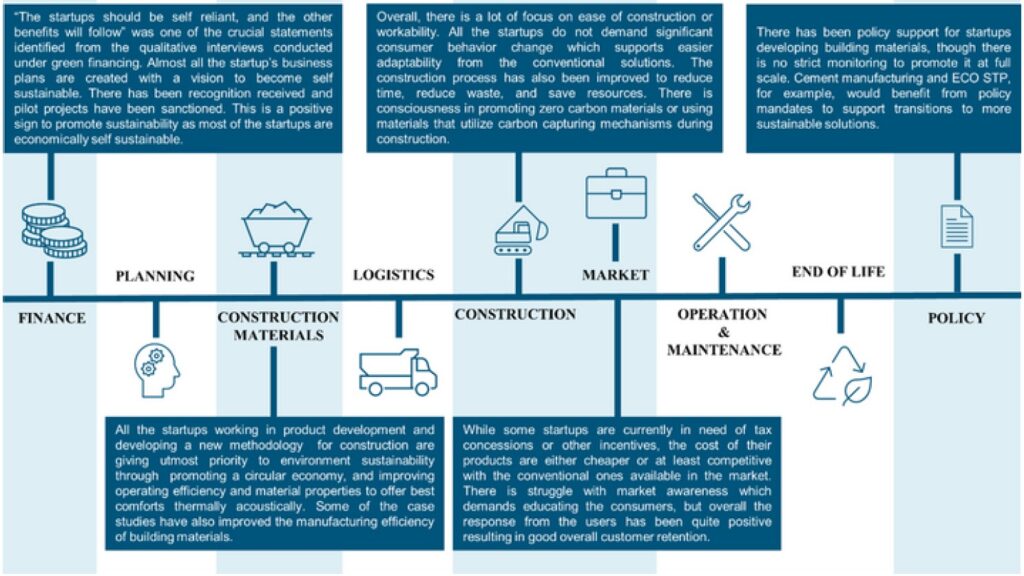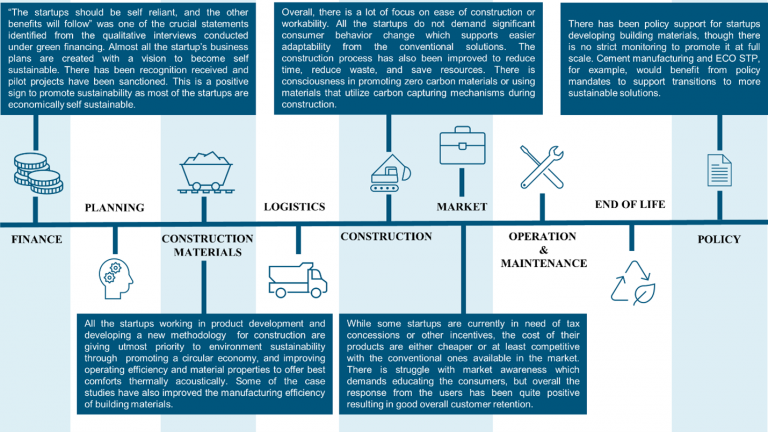This research report details a landscape analysis of sustainable housing solutions in India for Habitat for Humanity. As India is a large and heterogeneous country, this research used a case study approach through desk research and interviews with experts to identify new sustainable construction solutions, which were then benchmarked against national institutional guidelines and policies on sustainable construction.
The benchmarking framework was used to identify where solutions addressed various sustainability considerations. From the solutions benchmarked, there appears to be positive growth toward promoting environmentally friendly materials that are also price-competitive in the market. All the products reviewed are currently strengthening their supply chains by using local resources, making the manufacturing more efficient than conventional methods, and ensuring operational efficiency, in addition to maintaining price competitiveness. Additionally, there appears to be a positive policy push to support pilot projects and relevant seminars, but there is still a lack of awareness among users and fraternity for the promotion of these new materials. Being a part of the schedule of rates approval from various standards and testing organizations to enter the mainstream construction value chain still remains a challenge. Further support, such as lowering the goods and services tax, increasing incentives and access to funding, as well showcasing new solutions at large events, can help users become familiar with these new materials.
Overall, there is a positive step being taken by various private stakeholders to come up with materials that are sustainable across various parameters, but there is still a long way to go for them to completely replace conventional materials through the adoption of the masses.

A framework to define the status of sustainability within the scope of the study steps of the value chain of construction. Attribution: Sudhamayee Pochiraju
